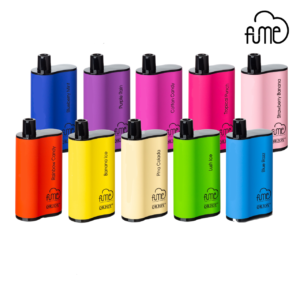Are you ready to break free from vaping? Quitting vaping doesn’t have to be an insurmountable challenge. While it does come with its own set of difficulties, it is generally considered easier than quitting smoking. If you’re seeking freedom from your vaping habit, here are some strategies that can help you along the way.
- Gradually decrease nicotine intake: Weaning off nicotine gradually is often the most effective method to quit vaping, as it minimizes withdrawal symptoms. If you use commercial e-liquids, gradually lower the nicotine concentration over time. Most regular nicotine juices come in strengths of 0, 3, 6, 12 mg, and sometimes 18 mg or 24 mg. Nicotine salt juices are usually available in 10, 20, 35, and 50 mg strengths. Consider these factors when tapering down your e-liquid strength.
- Maintain consistent inhalation methods: Stick to your preferred inhalation method, whether it’s mouth to lung or direct lung inhale, to ensure a consistent nicotine intake per puff. Switching inhalation methods while tapering down may affect your perceived nicotine intake.
- Monitor e-liquid consumption: Be mindful of self-titration, a common phenomenon where people consume more e-liquid to satisfy their cravings. Lowering the strength of your e-liquid may result in increased juice consumption. To make tapering down easier, consider DIY e-liquid or mixing nicotine-containing e-liquid with zero-nicotine juice of the same flavor until you eventually switch to zero nicotine altogether.
- Gradually reduce e-liquid consumption: If you already use low-strength e-liquid, have limited access to different nicotine strengths, or have a surplus of e-juice, you can try gradually lowering your e-liquid consumption. However, be aware that this method requires careful monitoring and self-control.
- Consider quitting cold turkey: If you’re ready to quit vaping abruptly, without tapering or gradual reduction, you can choose to go cold turkey. Factors such as health concerns, unwanted side effects, medical advice, or legal restrictions may influence this decision. Keep in mind that physical withdrawal symptoms may occur, but they are generally milder compared to quitting smoking cold turkey.
- Be prepared for withdrawal symptoms: When quitting vaping, some common withdrawal symptoms may arise, such as cravings, fatigue, drowsiness, headaches, increased hunger, irritability, depression, erratic heart and blood pressure, and digestive issues. To combat cravings, consider keeping a vape and a bottle of e-liquid in a stored location. This can serve as a deterrent from returning to smoking, as cigarettes are more readily available than vape gear and e-liquid.
- Quitting JUUL: Quitting JUUL, a highly addictive vaping device, may require a specific approach. Start by using lower-strength pods, if available, to gradually reduce nicotine intake. If lower-strength pods are not accessible, switch to an open pod system that allows you to vape e-liquid of your choice. Start with higher nicotine levels (12 mg and above) and gradually decrease them over time.
Remember, quitting vaping is a separate process from quitting smoking. Recognize that vaping is closer to nicotine replacement therapies (NRTs) like gum or patches rather than smoking processed tobacco leaves. By adopting the right mindset and implementing these strategies, you can successfully quit vaping and embrace a vape-free lifestyle.
Please let me know if you need further assistance or if there’s anything else I can help you with!



